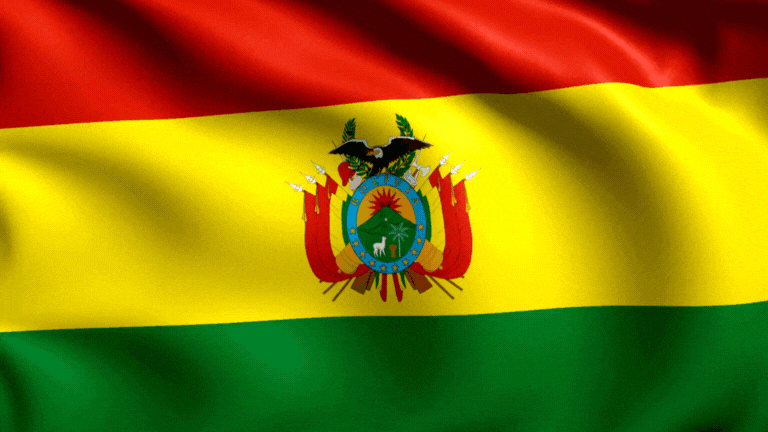Please be aware that this article may contain links to products and services we recommend. If you click on any of these links, we may earn a commission at no extra cost to you. We only endorse products and services that we believe will add value to our readers. Learn more here.
Bolivia Flag: History & Symbolism
Hack The Quiz
5/8/20243 min read
This article explores the history and symbolism of the Bolivia flag, providing an overview of Bolivia’s location in South America and explaining how the flag’s colors and design represent the country’s rich natural resources, history, and national pride.
Where is Bolivia?
Bolivia is located in the heart of South America, bordered by Brazil to the north and east, Paraguay and Argentina to the south, and Chile and Peru to the west. As a landlocked country, Bolivia is known for its incredible diversity in landscapes, ranging from the towering Andes mountains to the vast salt flats of Salar de Uyuni.
Bolivia’s rich cultural heritage is influenced by its indigenous populations, particularly the Aymara and Quechua people, as well as its colonial history under Spanish rule. The country gained independence from Spain in 1825, and its flag, adopted in the same year, symbolizes Bolivia’s national identity, its natural wealth, and the resilience of its people.
The History of the Bolivia Flag
The flag of Bolivia was officially adopted on August 17, 1825, shortly after the country achieved independence. The design has remained largely unchanged since its adoption, although some elements, such as the coat of arms, were added later.
The tricolor flag reflects the country’s resources and history. The red, yellow, and green stripes symbolize the bravery of its people, the country’s vast mineral wealth, and the fertility of its lands. These colors have become synonymous with Bolivia’s national identity, representing its diverse population, which includes both indigenous and mestizo communities.
The flag has been flown proudly ever since, serving as a symbol of Bolivia’s sovereignty, its struggles for independence, and its ongoing efforts to preserve its unique cultural heritage.
Breaking Down the Bolivia Flag’s Design
The Bolivian flag consists of three horizontal stripes of red, yellow, and green, with the national coat of arms in the center. Each color on the flag has a specific meaning tied to Bolivia’s history and natural resources.
Let’s break down the elements of the flag:
The Red Stripe
The top red stripe represents the bravery and sacrifice of Bolivia’s soldiers and its people, particularly during the wars for independence. It stands as a tribute to those who fought to free the country from Spanish rule.
The Yellow Stripe
The yellow middle stripe symbolizes Bolivia’s vast mineral wealth, particularly the country’s rich deposits of silver, gold, and other precious metals. Mining has historically been one of Bolivia’s most important industries, and the yellow stripe honors the country’s natural resources.
The Green Stripe
The green bottom stripe represents the fertility of Bolivia’s land, its agriculture, and its lush forests. Agriculture plays a key role in the Bolivian economy, and the green stripe reflects the country’s reliance on its fertile lands.
The Coat of Arms
The national coat of arms, which is placed in the center of the flag, was added later. It includes a depiction of the iconic Mount Potosí, Bolivia’s rich mining heritage, and a majestic condor, symbolizing the country’s freedom and sovereignty. The coat of arms also features several flags, llamas, and a rifle, symbolizing Bolivia’s strength and natural wealth.
Final Thoughts
The Bolivian flag is a vibrant symbol of the nation’s history, wealth, and natural beauty. Each color tells a story: the red honors the courage of the people, the yellow reflects the country’s abundant mineral resources, and the green represents Bolivia’s fertile lands and natural landscapes.
Since its adoption in 1825, the flag has been a constant reminder of Bolivia’s struggles for independence and its rich cultural heritage. The flag is a source of national pride, often displayed during national celebrations and important events, symbolizing the strength and unity of the Bolivian people.
Expand your mind ...
Explore trivia that broadens your understanding and knowledge of the world.
WE ARE HERE FOR YOU
JOIN US and hack the quiz
info@hackthequiz.com
© 2024. All rights reserved.



